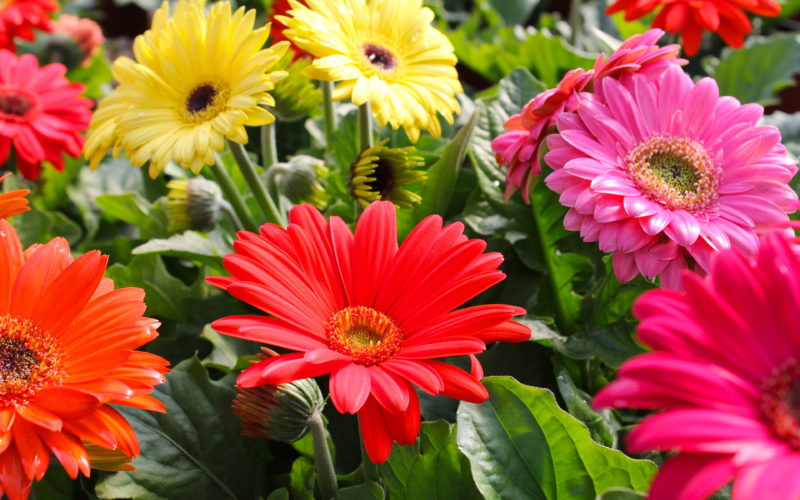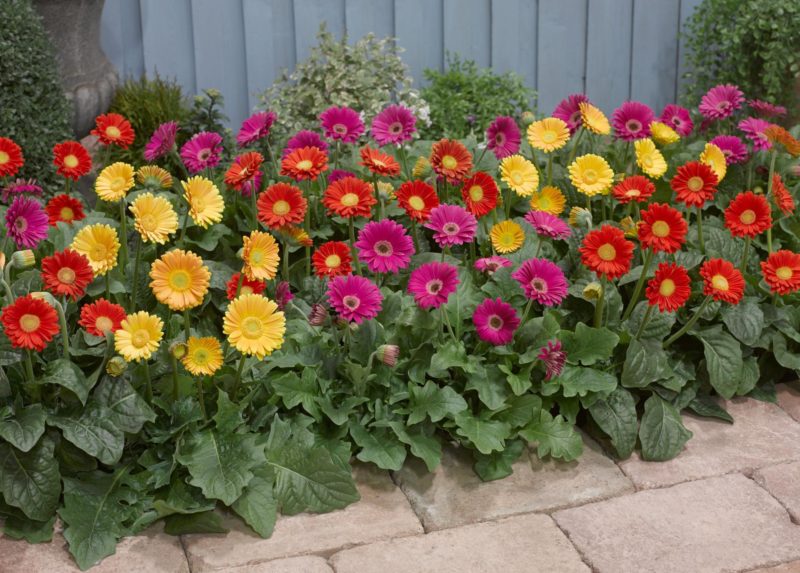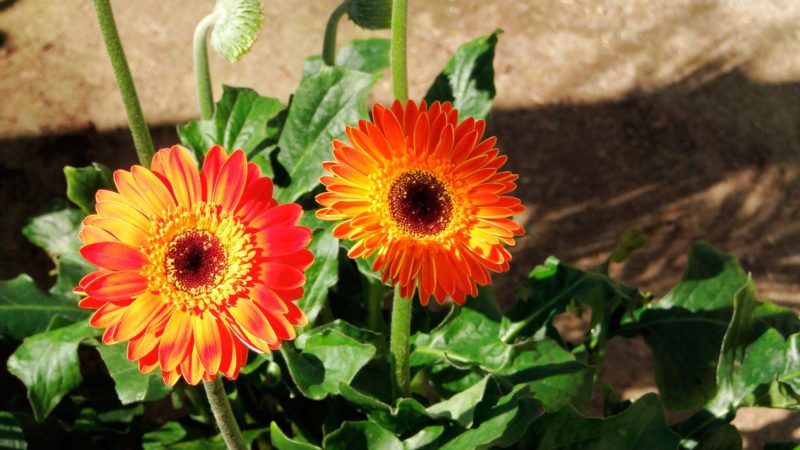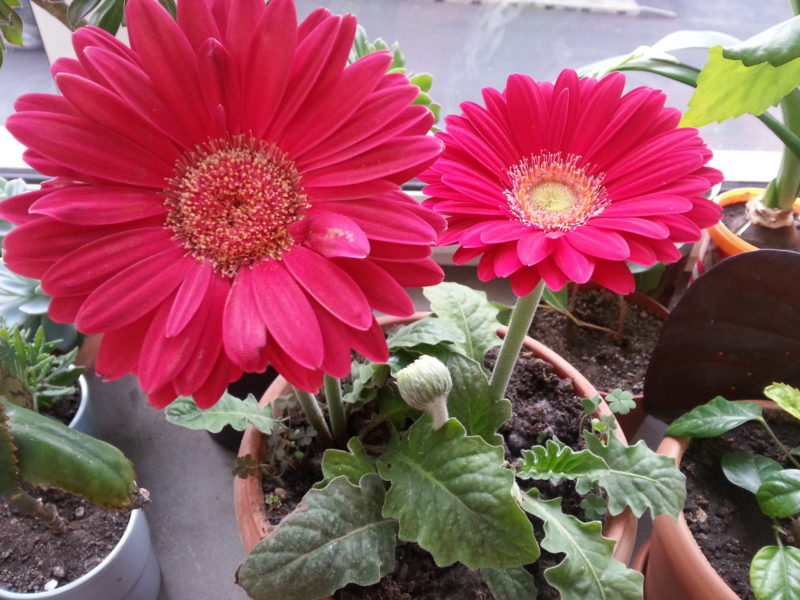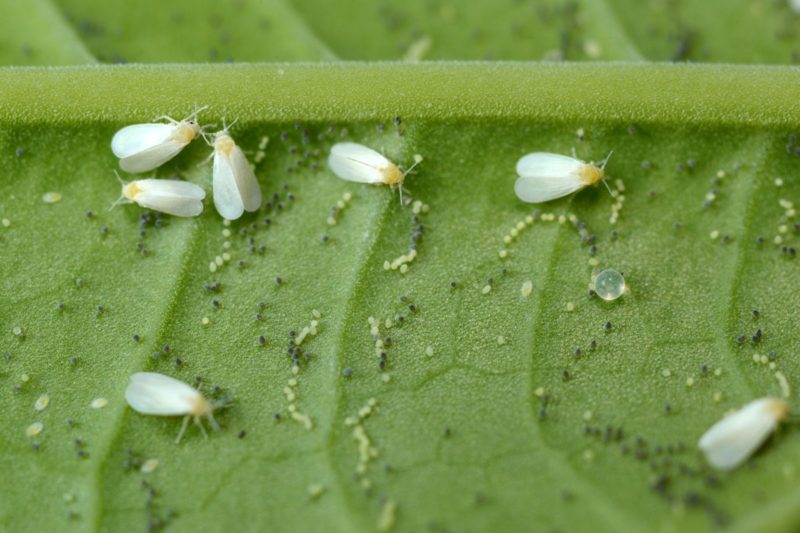Large brightly colored flowers of the plant are used for cutting, look great on flower beds. Planting and caring for a garden gerbera are activities that require certain skills. Experienced gardeners are easier to handle, beginners should consider some tips to avoid problems.
Material Content:
Description of varieties of garden gerbera
The genus Gerbera belongs to the Astrov family. The most common species are G. Jameson and G. zelenolifolia. These are herbaceous perennials native to Africa and Madagascar.
Numerous hybrid varieties of gerberas differ in shape (simple, terry and semi-double), the diameter of the inflorescences-baskets (4–25 cm), color. Corollas of marginal flowers in a basket can be white, cream, yellow, orange, pink, red. In recent years, blue and violet, as well as two-tone gerberas (bicolor), have been popular.
Relatively winter-hardy hybrids belong to the Garvinea cultivar group. These are garden perennial gerberas that can be planted in open ground. The height of the plants is 45 cm, the diameter of the bush is up to 40 cm. The flowers are smaller than that of the standard gerbera, but more numerous, of various colors, appear from spring to autumn. Garvinii in containers can be used for mobile gardening.
Brief description of the color of the gerbera variety Garvinea for open ground:
- Sunny - bright yellow flowers for a summer flower bed. They go well with the Vivian variety, which has a pale yellow color.
- Lindsey - bright pink, with a dark center.
- Romy - red, with a bright center.
- Sweet Surprise - Violet.
- Valerie - pale pink.
- Sophie - bright red.
Gerber Jameson is a rhizome plant 45 cm tall with cup-shaped inflorescences 9–15 cm in diameter. The leaves are collected in basal rosettes.Under the name "Gerbera Jameson" in flower shops usually sell mixes of Dutch selection.
Hybrids of the Sundayz series (Mini, Bicolor), Flori Line are grown in pots on balconies and terraces. The diameter of the Sundayz mini-gerbera flower is from 5 to 7 cm. Coloring is from white to purple. Variety Sundayz Bicolor has a black center, two-tone basket. As a rule, gerbera bushes in a pot look compact when buying, bloom beautifully. After a few months, they are stretched out indoors or on the terrace.
Flowers are supplied with special preparations (growth inhibitors, stimulants) before delivery to the distribution network and in specialized stores. The effect after the cessation of the action of substances quickly disappears. As a result, a compact, abundantly flowering gerbera bush in a pot does not last long after purchase.
Growing Features
Garden gerberas grow as biennials and perennials. In areas with a warm climate, flowers do without winter shelter. If the winter is frosty, then the plants are dug up, like dahlias, transferred to rooms with a temperature of 7 to 15 ° C. In spring, rhizomes are planted in open ground.
On a note! Low-growing hybrids of the Garvinia cultivar group withstand frosts down to –5 ° С.
The special requirements of the garden gerbera for lighting and temperature conditions must be taken into account. A bright place that receives sunlight in the first or second half of the day is suitable. If the site is lit all day, it is important that there is protection from the scorching rays at noon. In summer, gerberas need an air temperature of at least 15-16 ° C.
Outdoor landing
To grow flowering garden gerberas, you need to choose the right time for sowing seeds and planting young plants. In the spring, when the threat of frost finally passes, you can plant gerberas in open ground. If later, then the flowering time is reduced.
The soil for flowers should be slightly acidic or neutral, nutritious, loose, well-drained. Optimum pH values are 5.5-6. The most suitable for planting is a mixture of garden soil, peat and sand. Gerbera does not need a lot of humus or compost. If the soil is not sufficiently permeable, more sand can be added.
How to care for a plant
Gerbera in spring needs good watering for the formation of leaves and buds, in summer for abundant flowering. However, waterlogging should be avoided. When flowers appear, watering should be only under the root. Plants are occasionally sprayed to increase humidity, especially during a drought. It is recommended to use settled water at room temperature: from the cold, rhizomes may begin to rot and leaves may fall.
Fertilizers in liquid form are applied from May to September once every 2 weeks. It is desirable to combine top dressing with watering. Mineral fertilizers with a low concentration of nutrients are used. In the fall they feed once a month. In winter, gerbera does not need additional nutrition.
Perennial wintering
If winter temperatures are not too low, then you can leave the gerbera in the open ground under an insulating layer. The plant mass formed during the summer is covered with brushwood, leaves, straw, covered with a net and fixed on the ground.
In the middle lane, the surefire way to protect the gerbera from freezing is to dig out at the end of September with a lump of earth, immediately transplant it into a pot. In winter, plants should be kept in a cool, dry place, for example, in the basement. The optimum temperature for the rest period is in the range of 7-10 ° C. During this period, plants need to be watered 1-2 times a month.
Breeding methods
You can multiply the number of garden gerberas by sowing seeds, dividing the bush and cuttings. The rhizome is dug up, washed, cut into pieces and placed each in a glass of water. Within 2 weeks, roots grow 5 cm long and young shoots. Rooted cuttings are planted in open ground.
The division of the bush is the main method of propagation of the garden gerbera. The old plant is dug up in the spring and cut into several parts.Each dividend is planted in the ground, leaving a rosette with leaves on the surface.
Important! If the seeds are collected from a gerbera in the garden, and not purchased at the store, then the plants may not retain varietal characteristics.
Gerbera is sown for seedlings in February or March. Seeds lose their germination during storage, so it is necessary to use fresh seed. Prepare boxes with a substrate of sheet earth, peat, sand, perlite in a ratio of 2: 1: 1: 1.
Soak the seeds in water or spread on moistened gauze. After biting, they are embedded in the soil to a depth of 2-3 mm. After several weeks, shoots appear at a temperature of 23 ° C and good moisture.
When 2-3 real leaflets grow, dive seedlings into more spacious boxes. Young gerberas with 4-5 leaves can be planted in separate pots. Temper seedlings, gradually accustoming to temperature and lighting on the street.
Protection against diseases and pests
Gerberas are threatened by fungal and viral diseases. Alternaria infection is caused by fungi from the genus Alternaria. The disease manifests itself in the form of brown spots of round and irregular shape on the leaves. Plants are sprayed with a Bordeaux mixture, modern fungicides. From gray rot is treated with "Topaz" or "Fundazole".
A common gerbera virus disease is a mosaic. The leaves of the affected plant are covered with yellow and light green spots. The infected gerbera is destroyed, since the treatment of a viral disease is ineffective.
A typical gerbera pest is an aphid. The leaves are curled, covered with swelling. The infected plant is sprayed with soapy water and nettle infusion. You can wash it with a jet of water to get rid of aphids.
Another classic gerbera pest is whitefly. Leaves become spotty, yellow, dry and fall off. If you touch the gerbera, then small white insects take off. Sprayed plants affected by aphids and whiteflies, insecticide solutions.
Garden gerbera is a wonderful flower for open ground, landscaping of the terrace and balcony. The plant needs good lighting, warmth, regular watering and shelter in the winter.
Large-flowered standard (with a flower diameter up to 13 cm) and giant gerberas (with baskets with a diameter of more than 13 cm) are grown for cutting in greenhouses, greenhouses. They are not hardy, grow best at 16–23 ° C, and winter at a temperature of about 12 ° C.


